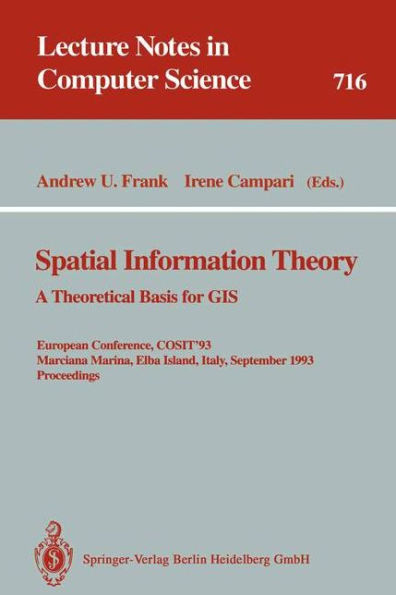5
1

Spatial Information Theory: A Theoretical Basis for GIS: A Theoretical Basis for GIS. European Conference, COSIT'93, Marciana Marina, Elba Island, Italy, September 19-22, 1993. Proceedings
488
Spatial Information Theory: A Theoretical Basis for GIS: A Theoretical Basis for GIS. European Conference, COSIT'93, Marciana Marina, Elba Island, Italy, September 19-22, 1993. Proceedings
488Paperback(1993)
$54.99
54.99
In Stock

Product Details
| ISBN-13: | 9783540572077 |
|---|---|
| Publisher: | Springer Berlin Heidelberg |
| Publication date: | 10/08/1993 |
| Series: | Lecture Notes in Computer Science , #716 |
| Edition description: | 1993 |
| Pages: | 488 |
| Product dimensions: | 6.10(w) x 9.17(h) x 0.04(d) |
From the B&N Reads Blog
